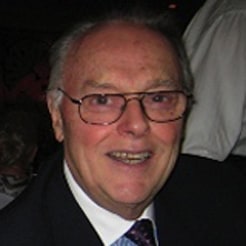
Navigating Life-Changing Events in Uncertain Times
The importance of the ability to adapt is eloquently captured in “The Reinventionist Mindset: Learning to Love Change, and the Human How of Doing It Brilliantly” by Joe Jackman (2020):
“Change is everywhere and coming for us fast. This isn’t breaking news. Yet, despite knowing this – seeing the impact on our businesses and livelihoods – our human instinct is to resist. Instead of choosing change, we choose the status quo and ride it off a cliff.”
Rather than resisting change, high performance companies instead create environments in which team members acquire the skills and experience they need in challenging times like these to continue the company’s rise to success, according to Paul Nunes and Tim Breene in “Reinvent Your Business Before It’s Too Late” in Harvard Business Review (2011).
Before a crisis like COVID-19 hits, however, the average company often has lost focus on developing and retaining enough “serious talent,” the team leaders and members with both the capabilities and the will to drive new business growth, especially in challenging times. This is especially true when a company is successfully humming along but has not yet peaked. In ordinary circumstances, companies feel that operations can be leaner (they have moved far down the learning curve by then) and meaner because they are under pressures to boost margins. They reduce both head count and investments in talent, which has the perverse effect of driving away the very people they could rely on to help reinvent the business during a crisis or when sales or product line S-curves decline.
High performance companies, meanwhile, begin with the expectation that they are hiring people for the long term. They don’t just look for the optimal people for the current openings. They recognize that cultural fit is what helps ensure that someone will perform exceptionally well over time. Then after developing the talent they hire, high performance companies routinely take a hard look at exactly what their people are required to do day by day. That is because long before a successful business hits its revenue peak, the basis of competition on which it was founded expires. Competition in the cell phone industry, for instance, has changed several times – for both manufacturers and service providers – from price to network coverage to the value of branding and applications.
High performance companies manage themselves according to three hidden S-curves – the basis of competition, the distinctiveness of their capabilities, and a ready supply of talent – putting them in a much better position to see changes in client needs, reinvent themselves, and create the next basis of competition in their industry even before their existing business lines have peaked or a crisis occurs. Companies that do not manage themselves with hidden S-curves in mind are likely to respond to a stall in growth by creating an urgent and drastic reinvention program – with little likelihood of success.
Jackman provides us with five principles to aid in achieving our success at reinvention: seeking insight everywhere, embracing uncertainty, creating the future now, obsessing the outcome, and making momentum together. He also offers steps to achieve what he calls a “Reinventionist Mindset”:
- Building a foundation of facts and feelings and immersing ourselves in our business
- Making a case for change, and a case for confidence
- Uncovering insights, by simply asking questions and listening carefully
- Defining an aspirational and financial outcome
- Reaching strategic choices on how to achieve it
- Bringing our company strategy to life through bold creative concepts and realistic, measurable goals
- Activating our strategy across all internal team and client touch points in order to optimize momentum
- Articulating our strategy, crafting our main messages for each of our clients and stakeholders, and immersing them in the level of detail appropriate to their roles
- Executing our strategy, measuring its impact, and sharing its progress relentlessly with all of our stakeholders
Within the word “reinvention,” Jackman claims, is this central idea embodied, the re being a continual return to the original invention, so it can be remade. The opposite of throwing everything out and starting again. The opposite of becoming something else entirely. Updating and adapting to the present moment and possibilities. Always sharpening its focus, while striving to innovate and make it more optimal. Truly grasping that any kind of “from/to” journey, should not be a big change moment, but a fluid state of continuity, evolving and improving toward a realistically achievable outcome.
This is another reminder of why life-changing challenging events – such as the COVID-19 pandemic – teach lessons that create leaders adept at navigating S-curve after S-curve and ultimately keep driving high performance companies to success.
- About the Author
- Latest Posts
Vice President Emeritus for Learning Technologies Donald Smith, Ed.D, CPT, headed ME&A programs in learning, leadership, and performance enhancement. He stayed with the firm in his retirement, bringing more than 65 years of experience as a coach, designer, facilitator, evaluator, manager, educator, and organizational change architect in more than 50 countries. He is affectionately known as ME&A’s MENCH.



